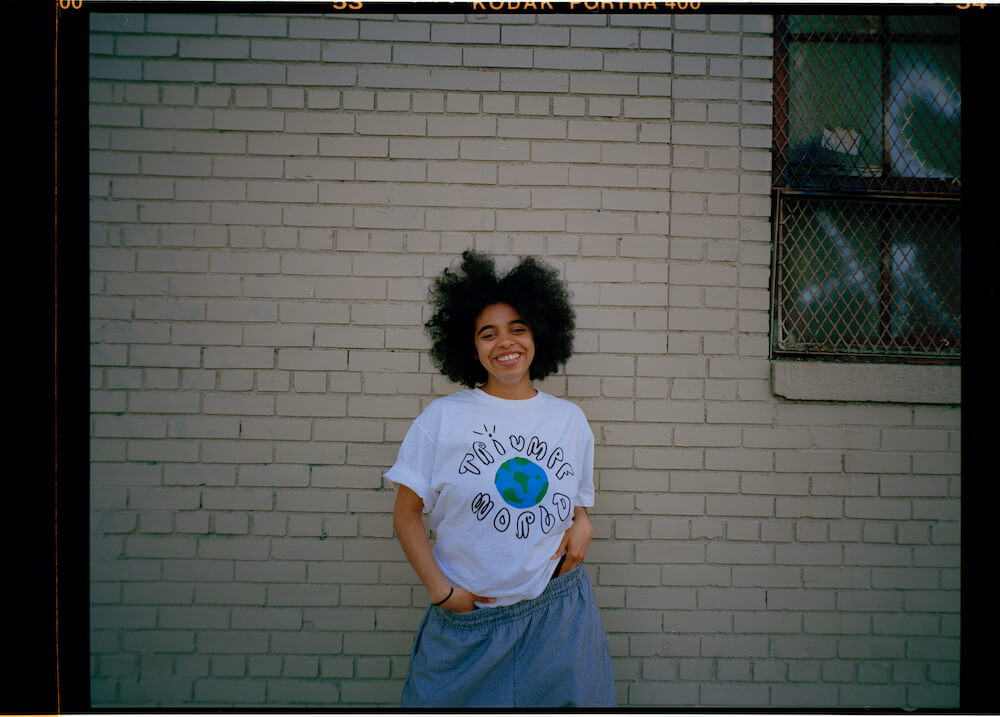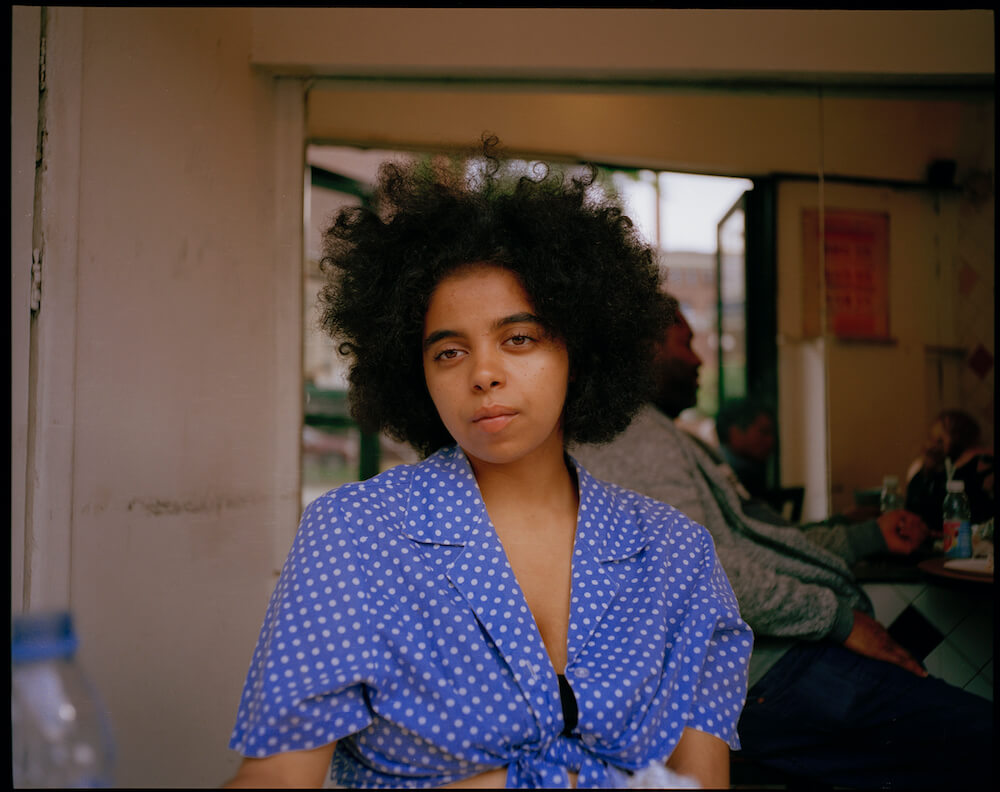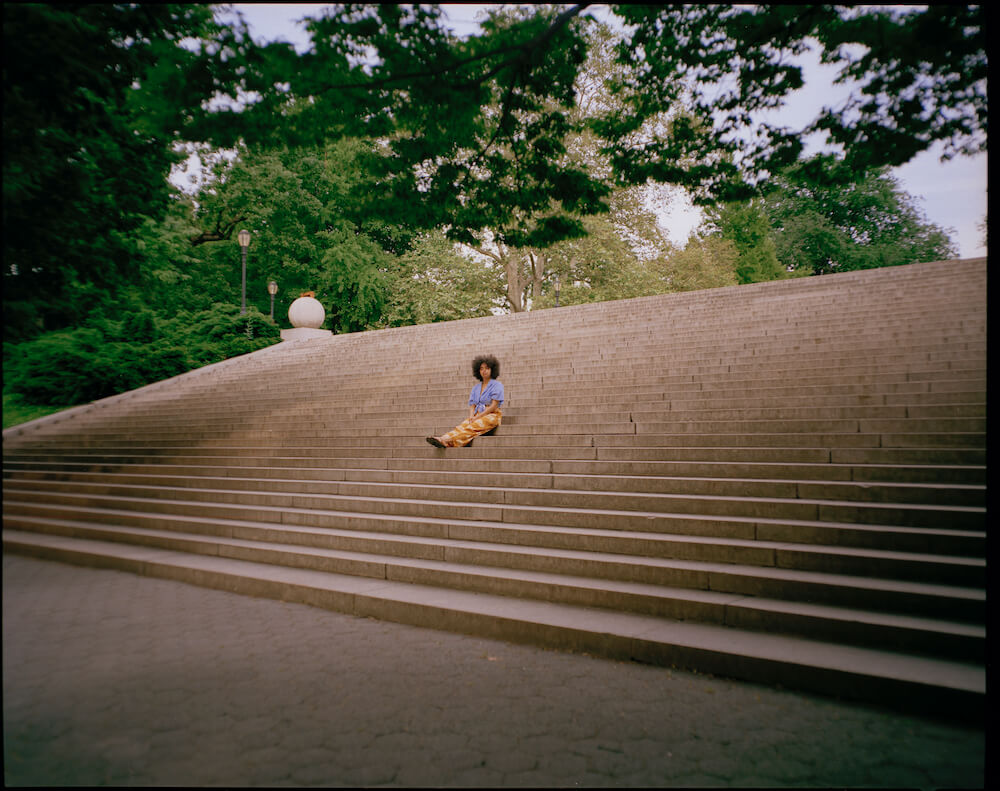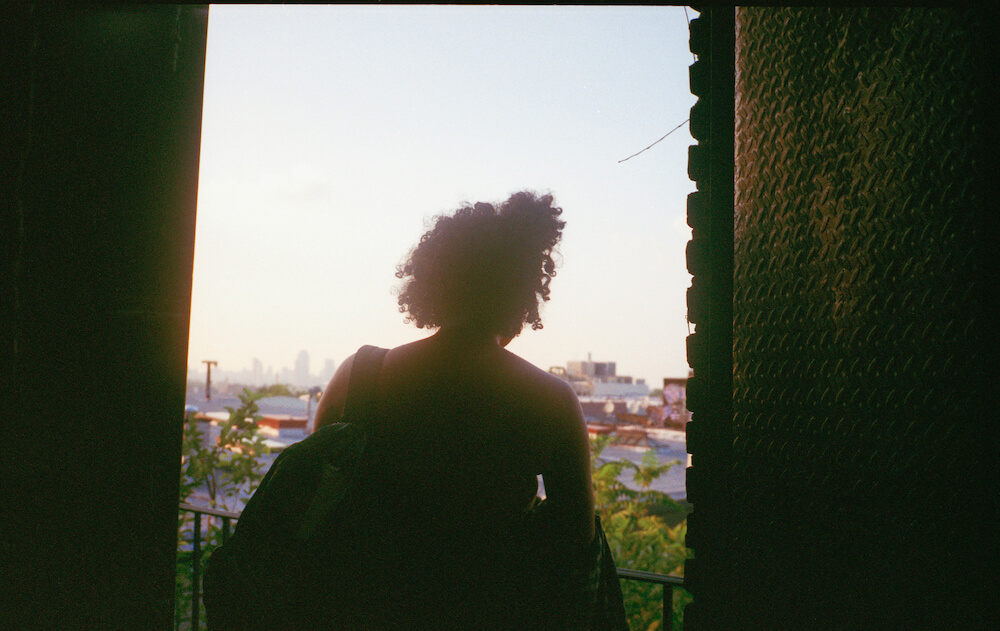Between Light and Dark: duendita

Queens-raised singer duendita’s voice is an instrument, and not in an a cappella way–more in an “Oh shit, I’ve never heard anything like this” way. Her July 2019 performance at Warm Up, MoMA PS1’s annual festival dedicated to uplifting the voices of innovative and underrepresented artists, was a divine experience. Her big curly hair revealed the beauty of Afro-Latinx roots; her deep, idiosyncratic voice floated and commanded.
As I sat on the steps in front of the stage, I listened to how her voice traveled to a place of pain, and then back to the softness of a mother’s touch. In a huge crowd of people from any- and everywhere, I watched as a man with long locs fashioned into a ponytail marvelled at duendita’s performance.
She performed songs from her EP direct line to My Creator. I had read that duendita believed God was within, and that a prayer between her and God could be the same as a conversation between her and a loved one. As I watched the man with the locs sway to the music, I thought that perhaps this is what duendita’s music is about. The spirituality in her music is undeniable, and for a few songs I felt connected to the man with locs, I felt connected to her, I felt connected to everything.
FRONTRUNNER had the chance to talk to duendita about her performance at Warm Up. We also discussed how her Puerto Rican and Afro-Latinx roots inspire her, the balance of emotions in her music, and how all forms of art are important for expression.

Your voice is the first thing I hear in most of your songs. Your music is subtle but your voice is strong. Having such a different voice, how has that affected you? Did it ever make you feel left out, or did you know it was something special all along?
Understanding/celebrating my voice has been difficult. It’s been difficult to be okay with myself and accept existence. My voice has been a lifeline lately. I sing when I’m feeling dissociated or “unreal.” Like wait, I have this thing. I can make the room vibrate back at me, that must mean I’m alive… or something?
Being Puerto Rican-American and Afro-Latinx, has Latin music inspired you heavily?
I am very inspired by rhythm. Rhythm is king. I love to see how the drum traveled with the diaspora through the slave trade. I love to know the function of song within society, whole genres developing from someone singing the news to the town as a technology. I like to think I have one of those voices. I want to learn even more. Understanding this history tickles my sense of self. Puerto Rico birthed sooo many incredible composers and poets. My friend Benjamin Julia has an Orquesta in New York City. Sometimes I sit in with Nick Hakim and Xenia Rubinos to sing boleros. It’s fun to learn history through music with your friends.
Correct me if I’m wrong, but I see your music as having both sadness and love. Do you see those themes? If so, how do you balance these emotions in your music?
I definitely see these themes but would go on to say I play with extremes, juxtaposition, balance of all kinds with my voice. It’s the tension between light and dark…or chiaroscuro.
I read that you were encouraged to be creative to help with your sadness. This not only includes music, but also drawing and painting. With an obvious respect for all the arts, how do you see different forms of creativity fostering your music process?
I love to doodle in the studio and paint at home. In Berlin, my friend Noah also paints but on huge canvases. We’ll make music for hours, then maybe I’ll play with my stamp collection as he goes off. That’s my vibe. I carry an arts and crafts bag in my suitcase. I ALWAYS have pastels, ribbon, and glue sticks on me. My friends come over at night to doodle and smoke weed. It’s important to express yourself in all the ways you feel best.

You don’t shy away from using unorthodox materials as instruments. For instance, you use a condom to make a unique sound on the direct line EP. What are some of your favorite instruments to use that aren’t actually instruments?
Everything and anything right now. I am perplexed by a song for my new project called “Die Not.” It began as a loop of my friend touching his vinyl needle, a bass frequency with a rhythmic element, and now it’s a whole song. I think that’s my favorite thing in the world.

Your name is inspired by Federico García Lorca’s poetry. Do you mind telling me more about that, and what his poetry and ideals mean to you?
Lorca wrote about art and the unknown with so much passion. He wanted to name the force that lives inside/possesses the artist. This concept of “duende” spoke to me as a young student, and the nickname stuck ever since. I also love his plays Yerma and Blood Wedding. I also scored one of his puppet shows once, The Billy-Club Puppets. I like to think I’m in conversations with a lot of artists–whether they’re alive or not, they’re still with me. He lives with me.
Lorca was also a queer hero. He was proud of his sexuality and didn’t hide. During the Spanish Revolution though they hunted him and he was killed, his books and drawings were burnt. That’s a heavy energy. I will continue to speak his name.
You performed at MoMA PS1’s Warm Up, which definitely is more like a festival than a concert. What was that experience like?
I am from Queens, my grandma lives super close. I saw Cardi B play Warm Up two or three years ago and cried a lot just to hear her voice and rap along. When they put me on the bill I was like, “Dreams come true.” My favorite artist out right now, MIKE, is playing [Warm Up on August 17], and I can’t wait to go and hit the cuchifrito spot right before. You’re in Queens, the world is yours!

What do you have coming up? Any new music or tour dates?
I have a lot of music to release. I’m almost ready to share a full project. I’m playing in New York City and Europe a lot [in August and September] too.